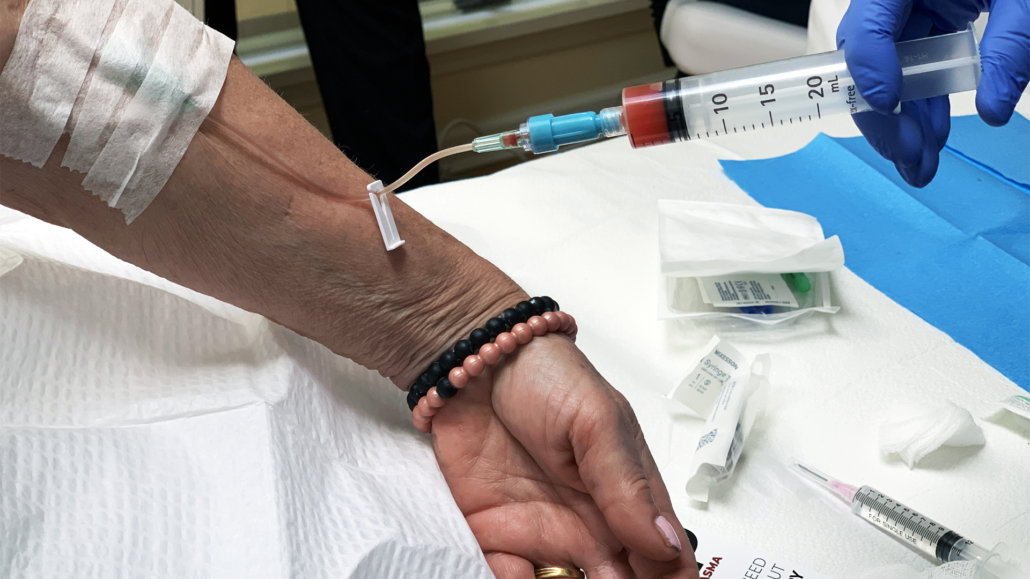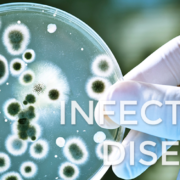Platelet-Rich Plasma (PRP) Therapy: An Innovative Solution For Lyme Disease
From sports injuries to hair loss and skin rejuvenation, Platelet-Rich Plasma (PRP) therapy is somewhat of an anti-aging miracle. New research now suggests that a novel type of PRP therapy may be used for chronic, multi-systemic conditions such as Lyme Disease—after just one treatment.
You won’t find any evidence of this in any medical literature nor on any mainstream medical website. In fact, the only conditions that Johns Hopkins Medicine says PRP is used for, besides hair loss and skin anti-aging, includes:
- Musculoskeletal injuries
- Post-surgical healing
- Osteoarthritis
However, researchers using this novel PRP therapy were able to improve health outcomes in patients who had several concurrent opportunistic pathogens. We’ll explore this unique PRP therapy shortly. But first, let’s cover the basics in case you’re not familiar with PRP therapy…
What is PRP Therapy?
Here’s the short story: PRP therapy is an injection of your own blood cells that speeds up the healing (or rejuvenation) of a specific area of the body.
PRP injections contain two substances: plasma, which is the liquid portion of blood, and platelets.
Platelets are small components of blood cells. Their chief job is being the first responder to the scene of an injury. Like super glue for a wound, platelets stick to the lining of the injured blood vessel. They “form a platform on which blood coagulation can occur,” as the American Society of Hematology explains.
In addition to their blood-clotting role, platelets, because they contain growth factors, also help healthy cells and bodily tissues reproduce and regenerate, respectively.
When you receive an injection of plasma-rich platelets, you’re basically reintroducing blood into your system that contains more platelets than normal.
While PRP therapy is considered safe, there are a couple knocks on it. First, it takes several weeks or month’s worth of injections to experience noticeable results. Unless you’re very wealthy or have health insurance that covers it, PRP is expensive.
Another knock on PRP therapy is that for more complicated conditions such as chronic illnesses, the correct amount of platelets isn’t an exact science.
TruDose PRP Therapy: Correct Dosing For Each Patient
We normally think of dosage with prescription drugs. PRP therapy also requires a specific dosage range, specifically the amount of blood and platelets to achieve therapeutic efficacy.
TruDose PRP therapy is the first patented method for determining the correct dosing that is patient-specific. Using artificial intelligence (AI) technology, TruDose PRP therapy analyzes your own blood to determine how much blood is needed in order to be therapeutic.
Bridging Biosciences, the biotech company behind TruDose, explains that platelets play yet another role in the body. They’re like drones circulating in the blood that identify threats and are armed with pathogen-specific tracking devices and weapons that can neutralize these threats.
The problem is that pathogens also have their own counterintelligence measures; they learn how to evade detection by the immune system.
TruDose PRP therapy, introduced in 2018, works by essentially resetting the platelet-detecting tracking methods that pathogens employ. (Learn more about how TruDose PRP Therapy works here).
How Can PRP Help With Lyme Disease & Other Chronic Illnesses?
Bridging Biosciences, in collaboration with the Innovative Health & Wellness Group of Dallas, TX, recently launched a pilot study involving 48 participants, with 18 receiving TruDose PRP.
The study shows promising results on using TruDose PRP on people living with complex, multi-systemic conditions such as:
- Lyme Disease
- Epstein-Barr Virus
- Cytomegalovirus
- Candidiasis
- Herpes simplex virus (HSV 1, HSV 2 and HSV 6)
- Mold toxicity
The first step in resolving these conditions is to completely eradicate and clear pathogens and parasites from the system. Unfortunately, conventional treatments, standard PRP therapy included, have not been able to demonstrate this ability.
However, after just one treatment of TruDose PRP’s individualized platelet-dosing mechanism, the 18 patients’ blood went from testing positive to negative for several of the above 8 pathogens.
In the case of Lyme Disease, one patient out of 8 demonstrated zero percent seropositivity, meaning no detectable pathogenic bacteria responsible for Lyme Disease (including, but not limited to: Borrelia burgdorferi and b. mayonii) was detected in the patient’s blood sample.
What’s even more promising is that the testing for these pathogens was conducted four months after the TruDose PRP treatment.
“To our knowledge, the current case series is the first to report a treatment, TruDOSE™ platelet therapy, that demonstrates serological negativization to these eight different pathogens,” says study author and functional medicine practitioner, Erin Van Veldhuizen, DC, FNP.
Promising PRP Therapy Results For Lyme Disease
As of this writing, the research findings are in the preliminary stages and have yet to be published in a peer-reviewed journal. However, the outcomes offer hope for a novel intervention for people living with chronic and often misdiagnosed health concerns.
The tricky thing about Lyme Disease is that it mimics other conditions, hence its nickname, “The Great Imitator.” It may come as no surprise then that 15 out of the 18 patients who received one treatment of TruDose PRP therapy had more than three of the 8 aforementioned pathogens.
In order to treat multiple pathogens, the researchers first treated the pathogens that were, to put it in a non-scientific way, off-the-charts in terms of seropositivity rates.
It’s important to mention that all the patients with Lyme Disease in the study had multiple pathogens. To reiterate, the Lyme Disease group of patients saw one (1) patient with complete negativization of Lyme markets. The remaining Lyme patients saw a reduction in Lyme markers.
“One can surmise additional TruDOSE™ platelet therapy treatments could eventually lead to Lyme clearance,” Van Veldhuizen said in the study discussion.

Learn More About TruDose PRP Therapy For Lyme Disease
Here at Innovative Medicine, our team of functional medicine practitioners has been fully trained in administering TruDose PRP Therapy.
To learn more about Lyme Disease, in general, check out this interview with New York Center for Innovative Medicine founder, Dr. Thomas Szulc. And to learn more about how we can support your health using TruDose PRP therapy, contact us here.
Disclaimer: The statements made in this article have not been evaluated by the Food and Drug Administration. Any products or treatments mentioned are not intended to diagnose, treat, cure, or prevent any disease. Please consult a licensed medical practitioner for medical advice.
At Innovative Medicine, we believe in transparency. We want you to know that we may participate in affiliate advertising programs pertaining to products mentioned herein.
See how we can help you restore complete health of body, mind & spirit.
Join our mailing list and receive exclusive offers + information!







Leave a Reply
Want to join the discussion?Feel free to contribute!